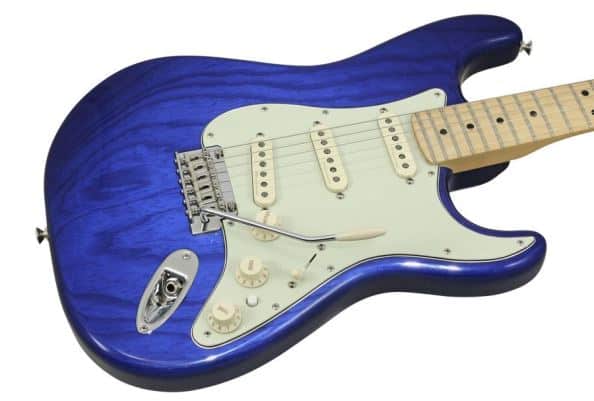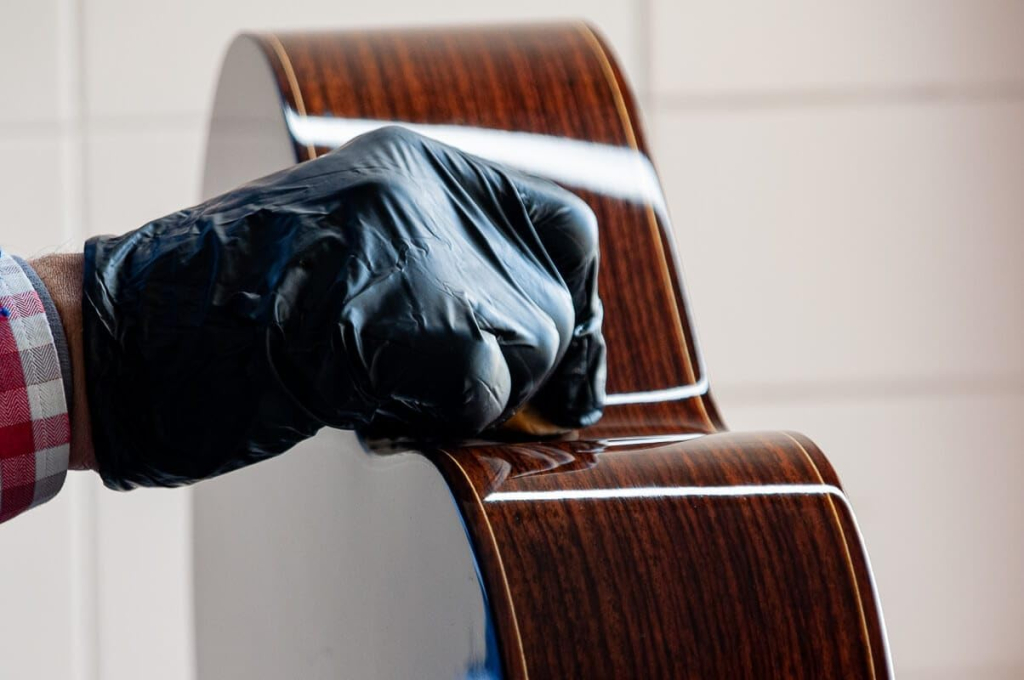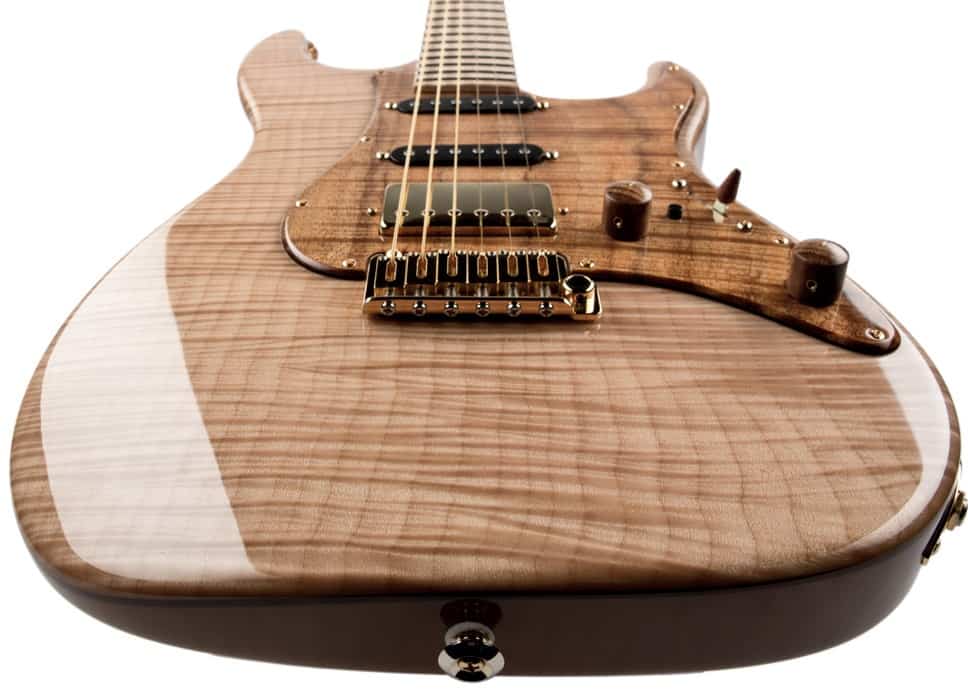We’ll detail the entire process to get paint our guitar in a blue metal effect.
We start from the beginning of the process with the preparation of the support, until the final stage of polishing. In this case we have chosen as the color for our guitar, the “Blue Metallic” but we can do it with any other dye.
The process consists of the following:
Here in this case wood humedeceremos not inflate the beta of the plate, but will sandpaper wood with grain 240-400, to fine tune the surface. Once smooth and free of fine sawdust:
1.’ll seal the surface of the guitar to fill and smooth the pores of the wood, refining the surface of the plate. We will pigmenting the raw guitar body white or black color. If we use the white background will have a brighter blue and black background will have a deeper blue.
Guitars Nitorlak use the Gloss White background mode or sealant, for its good filling capacity. Apply hand after hand to stop completely sealed support. We may repeat the application process with an intermediate drying time of 8hrs and soft sanding between coats. We will go up the grain of the sand from 240 to 800. It can lower the white nitro from 5 to 10% with average universal solvent evaporation, this will help better stretch lacquer and does not believe orange peel. Do not apply the color, until we have totally fine support at this early stage sealing.
2. We will apply on the merits previously sanding (with sandpaper progressive 400-800), the Nitorlack Guitars SilverSparkle. The application must be made thin hands and cross passes. Encharcar never too much, because if we cover a lot in a single pass the metal particles do not shine.
3. Without sanding, give several passes of Nitorlack Guitars Blue Tint finish. We want it to dye a single pass. The aim is that the dye let see the metallic appearance of the hand above painting, we see the blue but not the metallic tape. We can apply different passes of blue tint depending on the area of the guitar, creating different effects of shadows and color depth.
4. Finally we will set the color phase in our guitar and highlight the final gloss. Here we apply the transparent finish on high gloss nitro blue toned finish. Many runs as we deem to achieve the desired final brightness. It is recommended to sanding between coats to get a mirror shine.
We use grit 1500-2000 and is always advisable to reduce 10% solvent to avoid orange peel and obtain a surface as straight as possible. To make polishing you must wait a minimum of 3 to 4 weeks.
Use nitro lacquer for the entire process for the following reasons:
• Easy to use and application, as it is a mono component varnish.
• The merger between each layer of product is perfect, which favors unification of multiple thin coats of product.
• It is a product that does not alter the sound of the instrument, always respecting the natural sound.
• We can choose to apply the color with both gun and compressor, as with spray.
considerations:
Ease the process: It is not a difficult process to do, but you need patience to implement the whole process with the number of hands required application and in the right amount of varnish. Not to apply a large amount of hairspray will end before or obtain a better finish, but quite the opposite.
Choice of support or wood of our guitar is very important in any process of lacquering closed pore, select a plain wood with little pores, as this will greatly facilitate our painting process our guitar, saving time, money and varnish. In addition to obtaining a better end result.
Substrate Preparation: The most important phase of the process are the first hands seal / anchor of the plate. If we do this stage properly, we will not get a good final result.
Amount of product to be applied in each hand: Always, always apply thin layers of material, for the following reasons.
a) We will avoid sags
b) We will avoid bordones material on the sides.
c) will merge better product layer by layer.
d) We will avoid wrinkles and orange peel.
e) Improving the evaporation of the solvents.
Spray painting / or Spray: We can select one or the other, but we recommend spray application, whenever we can choose the application form.
Beware sanding: When sanding always perform the Dogfish use progressively less grain 240-1500 or 2000 (becoming thinner). Should never put too much pressure on the lacquer, as we run the risk of making peeled or mark excess stripe sandpaper.
Always sand in the same direction (the grain of the wood). In this case we will apply a light color, but when we paint dark colors, if we use sandpaper inadequate or poorly conducted this process, we defects appear in the last hands of gloss.
Necessary material:
- Nº producto 220122 ó 220121 (Spray 0,400cc)
- Nº producto 250004 (Spray 0,400cc)
- Nº producto 250006 (Spray 0,400cc)
- Nº producto 220075 ó 220074
- Nº producto 540421 (5L)



